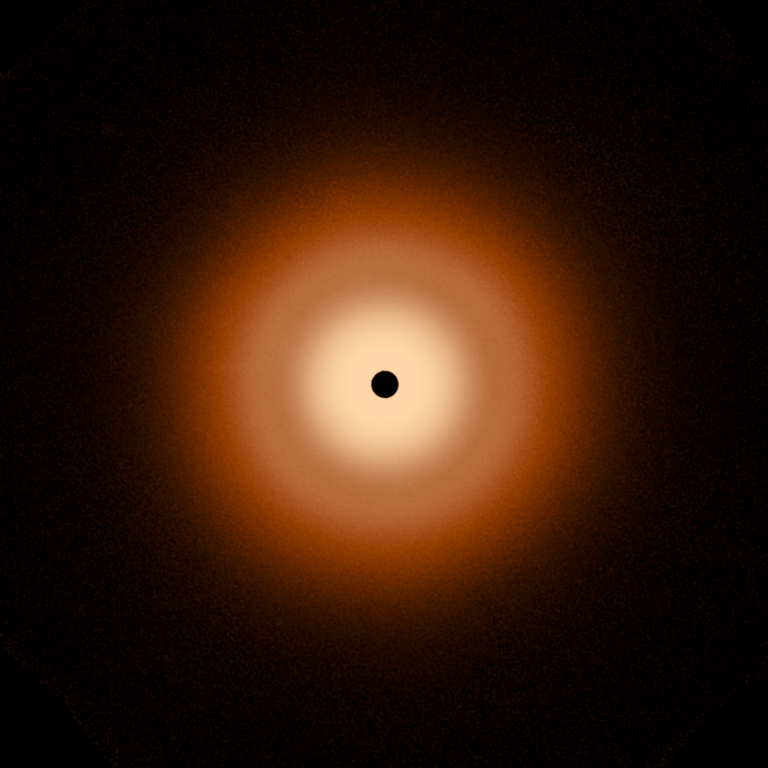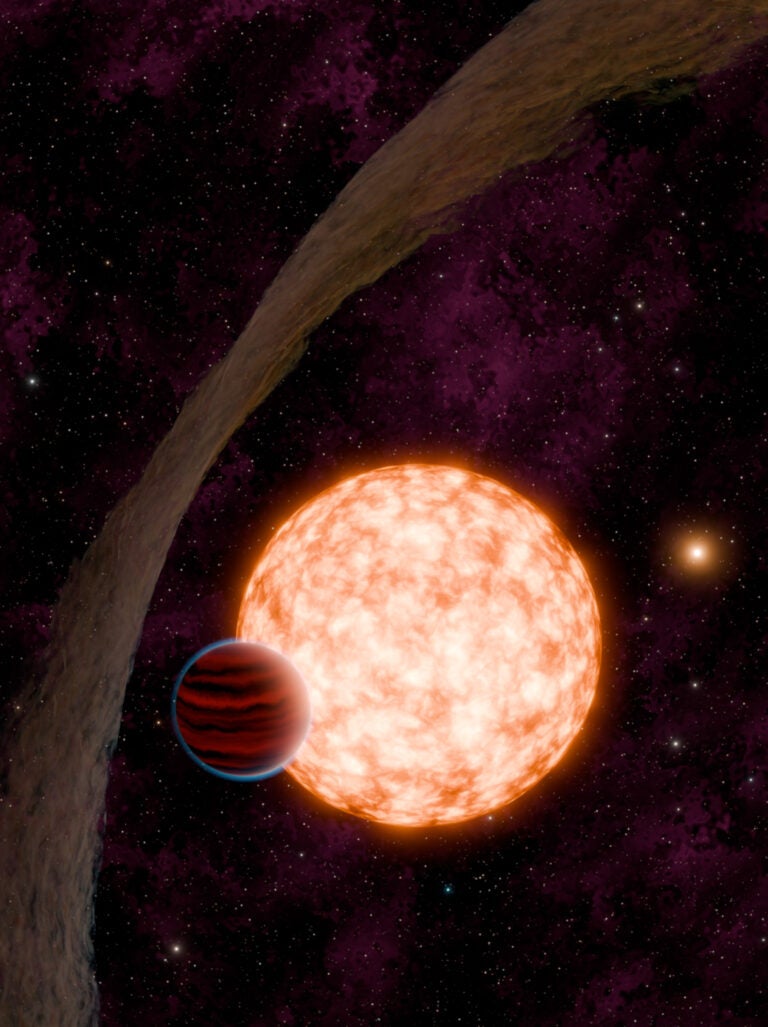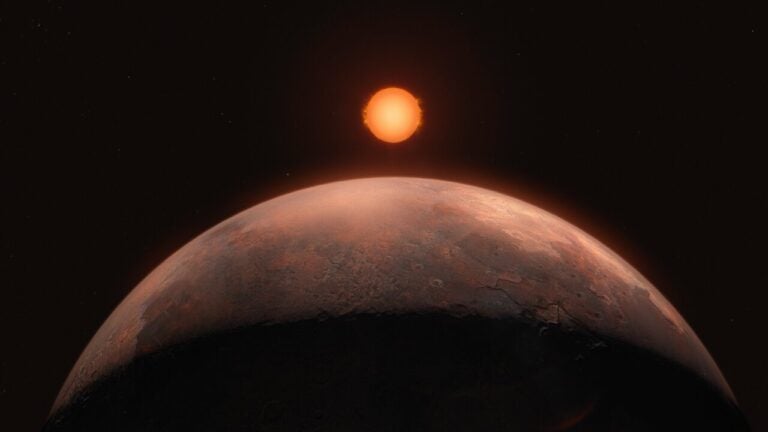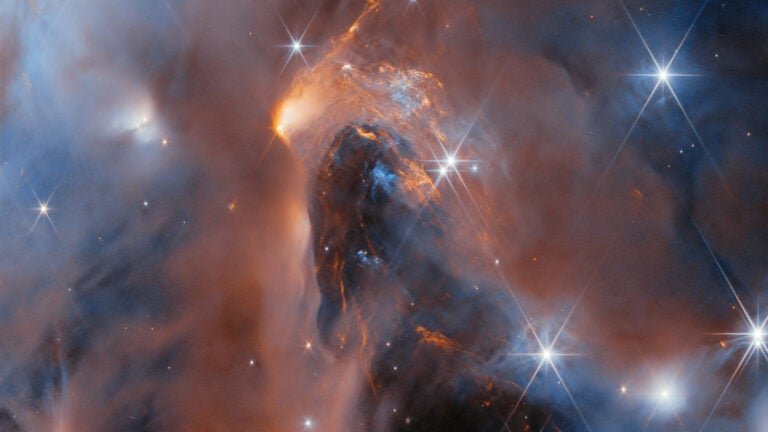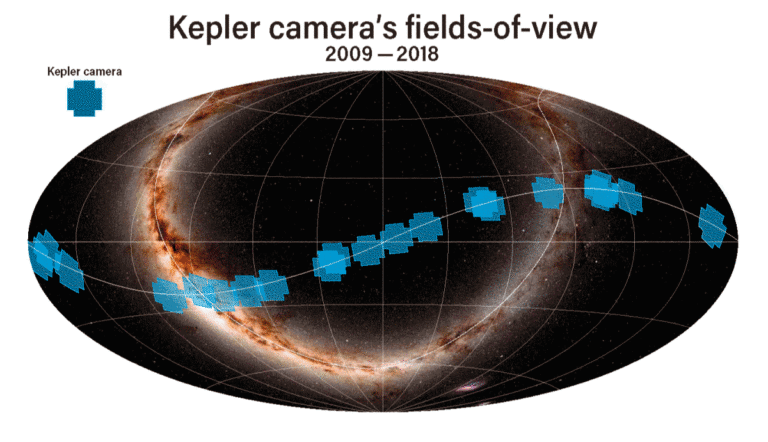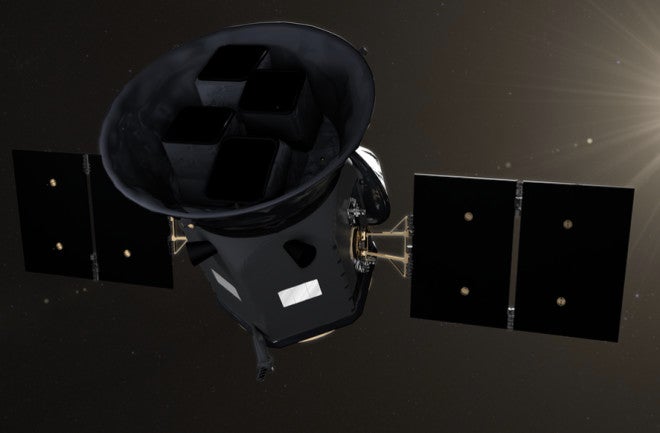
Astronomers have discovered a relatively cool and small exoplanet orbiting a nearby star, with a “year” of several months. The find offers a rare opportunity to study planets and solar systems like our own.
The exoplanet, dubbed HD 88986 b, circles a Sun-like star about 109 light-years from Earth — which is practically next-door in astronomical terms. The star is in the northern constellation Leo Minor the Little Lion. It’s too faint to be seen with the naked eye, although it can be seen with a telescope.
According to a study published this month in the journal Astronomy and Astrophysics, the exoplanet is a rocky sub-Neptune about 2.5 times the size of Earth with an estimated mass of about 17 times our planet’s.
Importantly, it has the longest orbital period of any confirmed small exoplanet, says study lead author and astronomer Neda Heidari, a postdoctoral fellow at the Institut d’astrophysique de Paris.
A long year
Heidari explains that very few confirmed exoplanets orbit their star with periods of more than 40 days, with some orbiting in just a few days. As a result, most of the exoplanets discovered so far are often so close to their stars that they have surface temperatures of thousands of degrees.
This new exoplanet, however, has a period of 146 days, or nearly 5 months. That period — and subsequent distance from its star, about half the distance between Earth and the Sun — give HD 88986 b an “equilibrium temperature” of roughly 366 degrees Fahrenheit (186 degrees Celsius), relatively cool for an exoplanet. Equilibrium temperature is the temperature a planet would be if the amount of energy it received from its star and the amount of energy it radiated into space were in perfect balance. This is not the case in the real world — Earth’s equilibrium temperature is a frigid –0.4 F (–18 C) — but it gives astronomers a good starting point for understanding a planet’s climate.
“The orbital period for this exoplanet is long, so its temperature is much colder,” than other exoplanet finds, Heidari tells Astronomy.
The world also orbits far enough out that it’s unlikely to have been affected by the gravity of other planets in the system or had its atmosphere stripped away by intense ultraviolet light from the star. That means it may still have its primordial atmosphere, and further studies might reveal new clues about the evolution of atmospheres on relatively “cold” planets like Earth, she says.
Finding exoplanets
Because the star is so close to us, astronomers have made spectroscopic observations of it for 25 years, including 15 years of observations with the SOPHIE spectrograph in southern France.
The international team of researchers used that data to discover HD 88986 b via the radial velocity method, which looks for changes in the wavelength of a star’s light as it “wobbles” in space, tugged this way and that by the gravity of orbiting exoplanets.
Determining the orbital period of an exoplanet requires observing it for at least three orbits, which can be done quickly when it orbits in just a few days. But verifying the existence of HD 88986 b, with its 146-day period, took much longer, Heidari says. Additionally, the star was sometimes only visible for part of the year, which created gaps in the data.
Spotting a small exoplanet with a long orbital period shows the latest refinements in the radial velocity method, which can now detect minute wobbles, Heidari says. She expects even more exoplanets will be found by further refinements.
The team followed up their discovery with observations by two space telescopes to look for transits, or dips in starlight caused when exoplanets cross in front of a star’s visible disk. Transits only occur when the planet’s orbital plane is tilted just right relative to Earth, such that we see the planet cross in front of the star. Those observations, with NASA’s TESS and ESA’s CHEOPS, suggest HD 88986 b is “potentially transiting” and more observations should confirm it, the authors write in the paper.
Too big, too hot
More than 5,500 exoplanets have now been confirmed, with more detected almost daily. But many are gas giants the size of Jupiter or larger, and most are much too hot to be useful as analogs of Earth.
That means rare finds like HD 88986 b — probably a rocky planet, with water making up roughly 25 percent of its mass — are important for understanding our own planet and solar system, Heidari says.
The team’s analysis also found evidence of a giant planet with a mass at least 68 times that of Jupiter orbiting at the edge of the same system with a period of more than 100 years. The nature of this giant planet is yet to be confirmed, but its existence makes the system more like our own and adds to its interest for astronomers, she says.
Astronomer Christophe Lovis of Switzerland’s University of Geneva is an expert on finding exoplanets with the radial velocity method but was not involved in the study. He tells Astronomy that detecting exoplanets at such large distances from their stars is key to the scientific understanding of planet formation and evolution.
Radial velocity spectrometry (RVS) now has the ability to detect non-transiting exoplanets up to 20 astronomical units out from their star, he says — that’s 20 times the distance from the Sun to Earth. And the method can “bridge the gap” between transit and astrometry techniques, the latter of which aims to directly measure a star’s movement in space as it wobbles due to exoplanets, so far with only limited success.
“RVS will indeed will indeed continue to play a decisive role,” Lovis says.
The new exoplanet is “pushing the boundaries of what we’ve been able to detect with radial velocities,” says astronomer Debra Fischer of Yale University, who’s also an expert in the method and wasn’t involved in the study.
“This is a beautiful example of how the field is beginning to map out planetary architectures on a comparable scale to our solar system,” she says.





